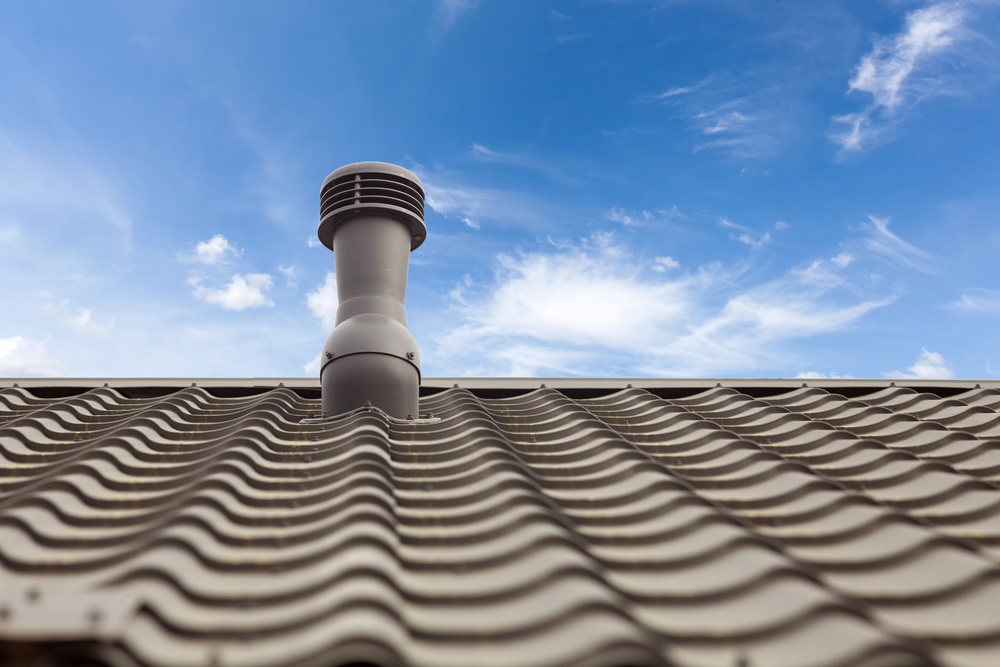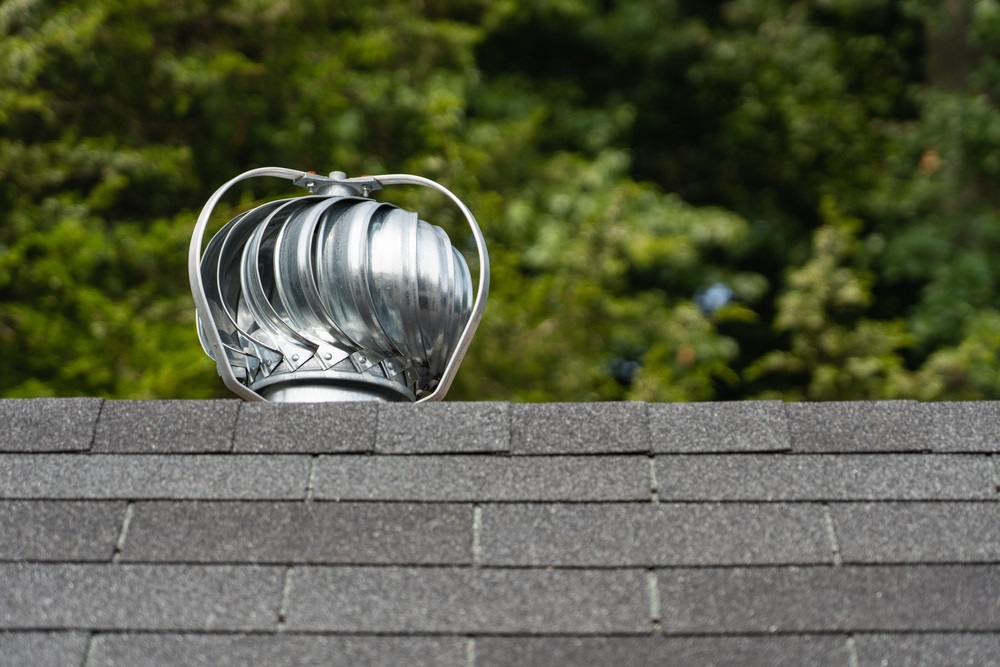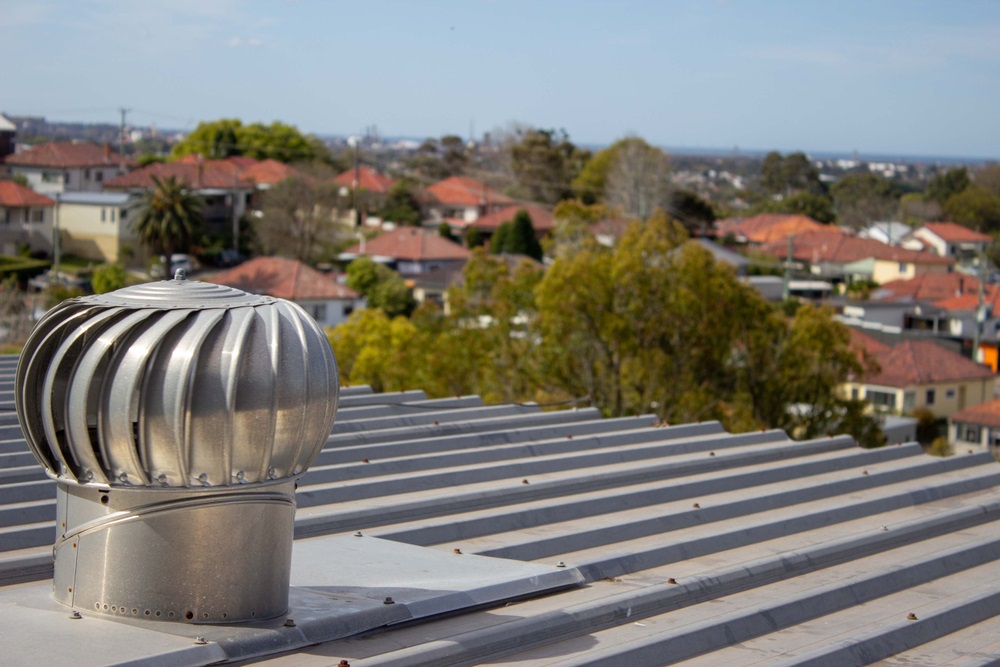When it comes to keeping our homes cool and well-ventilated, many of us turn to traditional methods like air conditioning. However, there is a lesser-known yet highly effective alternative called the whirlybird.
In this post, we will delve into the world of whirlybirds, examining their functionality, different types, effectiveness, ideal placement, and the numerous benefits they offer. Additionally, we will also shed light on their drawbacks, allowing you to make an informed decision about whether whirly bird roof vents are the right choice for your home. Let’s get to business and answer “What is a whirlybird?” first.
What is a Whirlybird?
A whirlybird, also known as a turbine ventilator or whirlybird roof vent, is a cylindrical device designed to promote natural ventilation within a building. It harnesses the power of the wind to create airflow and exchange stale air with fresh air, thereby maintaining a comfortable indoor environment.
They consist of a series of vanes or fins that rotate with the slightest breeze or temperature differential. The spinning motion creates a negative pressure inside the structure, effectively drawing out stale air, heat, and moisture while allowing fresh air to enter.
How Do Whirlybirds Work?
Whirlybirds operate on a simple yet ingenious principle. The power of wind and natural convection. As wind flows over the rooftop, it causes the turbine within the whirlybird roof vents to rotate. This rotation creates a pressure difference leading to a vacuum effect, sucking air from inside the building and expelling it through the vent. Simultaneously, fresh air is pulled in through vents, ensuring proper ventilation and cooler living space.
What are the Different Types of Whirlybirds?

Whirly bird roof vents come in various designs to suit different climates, architectural styles, and personal preferences. The most common types include:
- Traditional Wind-Driven Whirlybirds: These classic whirlybirds utilize wind power to drive the rotation of the turbine and facilitate ventilation.
- Solar-Powered Whirlybirds: Equipped with solar panels, these innovative whirlybirds generate electricity to power the turbine, making them ideal for areas with limited wind.
- Hybrid Whirlybirds: Combining wind and solar power, these whirlybirds offer enhanced performance in various weather conditions.
Do Whirlybirds Really Work?
Yes, whirlybirds have proven their effectiveness time and time again. Their wind-driven or solar-powered turbines ensure continuous ventilation, preventing the build-up of heat, humidity, and pollutants inside the building. Proper ventilation can contribute to improved indoor air quality, reduced energy consumption, and a more comfortable living environment.
While the effectiveness of whirlybird roof vents may vary depending on factors such as climate, building design, and installation, they have proven to be a valuable ventilation solution in many cases. Their ability to remove hot air, reduce moisture build-up, and minimize condensation can significantly improve indoor air quality and reduce the load on air conditioning systems. However, it is important to consider the specific conditions and requirements of your property before investing in Whirlybird roof vents.
Where is the Best Place to Put a Whirlybird?
To maximize the benefits of a whirlybird, it is crucial to install it in an optimal location. The ideal spot is typically on the highest point of the roof.
Ideally, they should be installed on the highest point of the roof, where the prevailing winds are most likely to hit. Placing whirly bird on roof near the ridge or on gable ends ensures efficient airflow and optimal ventilation throughout the building.
Additionally, considering factors such as the building’s orientation, prevailing wind direction, and potential obstructions is essential for the optimal performance of whirly bird roof vents.
How Many Whirlybirds Do I Need?
Determining the number of whirly birds for roof required depends on several factors, including the size of the building, the level of ventilation needed, and the local climate.
As a general guideline, one whirlybird roof vent is usually sufficient for every 100 to 200 square meters of attic or roof space. On average, a 1 to 2-bedroom house will need at least 2 roof whirlybird vents. For a 3 to 4-bedroom house, you will need at least 3 roof whirlybird vents, and for a 4-5-bedroom house, you will need at least 4 roof vents.
However, consulting with a professional can provide more accurate recommendations on the number of roof whirlybird based on your specific circumstances.
| House Size | Minimum Number of Roof Vents |
| 1 to 2 bedrooms | 2 |
| 3 to 4 bedrooms | 3 |
| 4 to 5 bedrooms | 4 |
Whirlybird Benefits
- Cost-effective Cooling: Enjoy reduced reliance on air conditioning, leading to energy cost savings.
- Enhanced Indoor Air Quality: Continuous ventilation helps eliminate allergens, odours, and harmful pollutants.
- Moisture and Condensation Control: Whirlybirds minimize the risk of mould and mildew growth by preventing moisture build-up.
- Extended Roof Lifespan: Improved ventilation with a whirlybird roof vent can help prolong the lifespan of your roof by reducing heat-related damage.
- Noise Reduction: Whirly bird on roof can minimize external noise intrusion, providing a quieter indoor environment.
- All-Weather Performance: Some whirlybird roof vents are designed to work efficiently even in low-wind or no-wind conditions.
- Easy Installation: Whirlybirds can be quickly and easily installed on most roofs without the need for major modifications.
- Maintenance-free Operation: Once installed, the roof whirlybird requires minimal maintenance and has a long lifespan.
- Natural Light Enhancement: Whirlybirds can be combined with skylights or roof windows, allowing natural light to enter while maintaining ventilation.
- Eco-Friendly Solution: Whirlybird roof vent operates without electricity, reducing your carbon footprint.
Whirlybird Disadvantages
- Limited Effectiveness: Traditional wind-driven roof whirlybird may be less effective in areas with low wind speeds.
- Initial Cost: While whirlybird roof vent is cost-effective in the long run, there is an upfront investment for purchasing and installation.
- Potential Roof Leaks: Poor installation of roof whirlybird can result in water leaks during heavy rainfall. If you have a leaking metal roof, it’s crucial to promptly address the issue by engaging in a good metal roof leak repair service.
- Aesthetic Considerations: Some homeowners may find the appearance of whirlybirds less aesthetically pleasing.
- Limited Cooling Capacity: Whirlybird roof vents provide ventilation but may not be as effective as air conditioning for cooling specific areas.
- Temperature Control: Whirlybirds regulate attic temperatures, but controlling indoor temperatures may require additional measures.
- Prone to Noisy Operation: In rare cases, the rotation of the turbine in wind-driven whirlybirds can produce a low humming sound.
- Risk of Bird Nests: Without proper protection, roof whirlybird can potentially become nesting points for birds.
- Not Suitable for All Roofs: Certain roof types or designs may not be compatible with whirlybird installation.
Harness the Power of Whirlybirds || Let Your Roofs Breathe Fresh

Whirlybirds offer an affordable and eco-friendly solution for enhancing ventilation and maintaining a comfortable indoor environment. Their ability to reduce energy consumption, improve air quality, and extend roof lifespan make them a popular choice for many homeowners.
However, it’s important to consider the potential drawbacks of a whirlybird roof vent such as dependence on wind, initial costs, and maintenance requirements. By weighing the benefits against the disadvantages, you can make an informed decision and enjoy the cooling benefits of a whirlybird while ensuring it suits your specific needs and circumstances.
Ready to transform your roofing experience?
Look no further than Smart Roof Whirlybird Experts, your go-to solution for roof replacement Perth.
Our team of skilled professionals is dedicated to delivering top-notch expertise to transform your roof. With our premium materials, we ensure a durable and stylish solution that stands the test of time. Why settle for ordinary when you can have extraordinary colorbond roof replacement.
Contact Smart Roof Experts today for exceptional roofing services in Perth!
FAQs
Do whirlybirds keep the house cool?
Whirlybirds remove heated air that has accumulated between the roof and the ceiling. This keeps your home cooler by preventing the same heat from flowing into the rooms through the ceiling area.
How long does a whirlybird last?
The lifespan of typical residential whirlybirds is 10 to 15 years on average.
Can rain get to Whirlybird?
Whirlybirds are made to resist strong winds and rainfall. There is no water penetration because of the design of the overlapping fins.
Are whirlybirds noisy?
A working whirlybird is almost silent; it only makes noise when it is malfunctioning. Cheap or improperly fitted whirly bird on roof are frequently susceptible to this. Make sure you speak with a roofing specialist before purchasing to prevent this.
Do whirlybirds need electricity?
When properly maintained, whirly birds for roof may spin for more than 20 years without any electricity, keeping your residence cosy and pleasant.
Do whirlybirds work in winter?
All year long, Whirlybird ventilators are effective. They keep your house cool in the summer and dry out the moisture in the winter.
Do whirlybirds reduce humidity?
Whirlybirds function to eliminate excess moisture and humidity during cold weather to stop the growth of germs and mould. Your home may be more energy-efficient, ventilated, and odour- and stale-air-free for a reasonable price by installing a whirlybird.
What is the flow rate of a whirlybird?
Whirly birds for roof have a capacity that can range from 100 to 200 cubic metres per hour to around 2,500 cubic metres per hour on a commercial basis.
Are whirlybirds sustainable?
Whirly birds for roof are an environmentally sustainable and user-safe alternative to other systems since they operate continuously (24/7) without releasing any harmful gases or toxins.
Are all whirlybirds the same size?
No, whirlybirds are not all the same size. The size of a whirlybird can vary depending on the specific model and manufacturer.
The most common sizes for whirlybirds are typically between 12 inches (30 cm) and 24 inches (60 cm) in diameter. However, there are smaller and larger sizes available in the market as well.
Is one whirlybird enough?
The vast volume of air in the ceiling cavity cannot be recycled by a single whirlybird quickly enough to keep it from heating up. If you install enough of them, they will function.
Some experts believe it would require at least 10-15 whirlybirds to efficiently cool the typical Australian home.
Can water leak through Whirlybird?
Do whirlybirds leak then? They don’t. No matter how windy the day is or how light or heavy the rain is, the design of the turbine prevents water from entering the turbine through the fins.
Are whirlybirds good?
Whirlybirds and the ventilation they give are helpful throughout the winter as well since they assist in removing wet air, which lowers winter energy costs. They do this by preventing dampness from being produced by condensation of moisture-rich air that is present both inside and outside the house.

